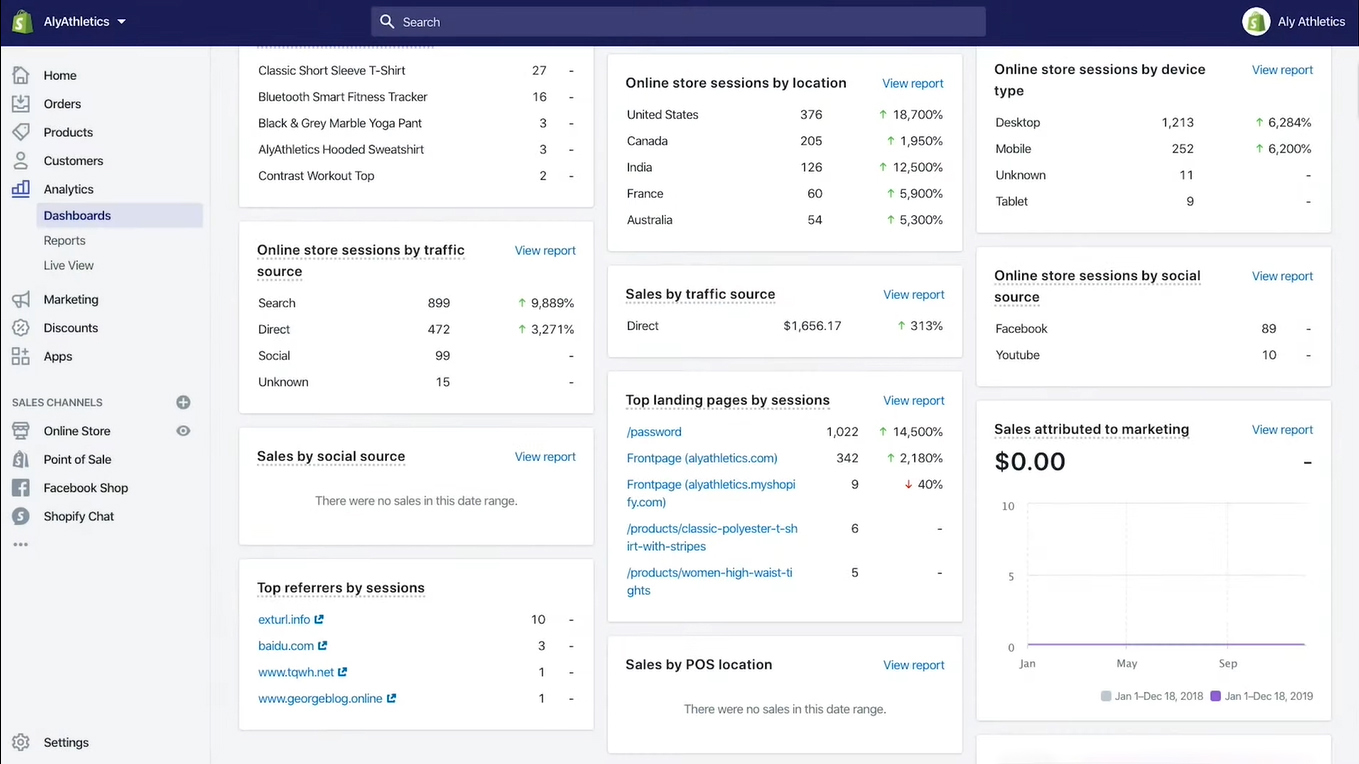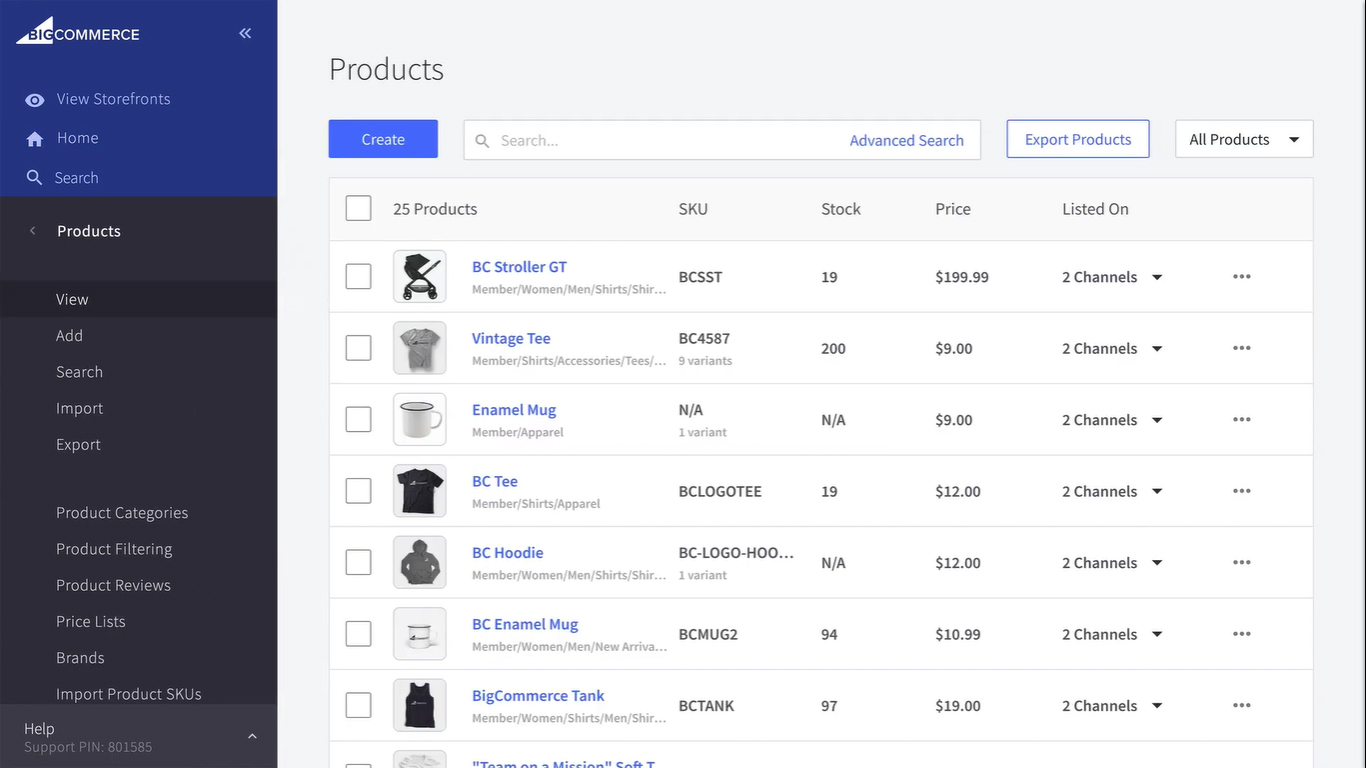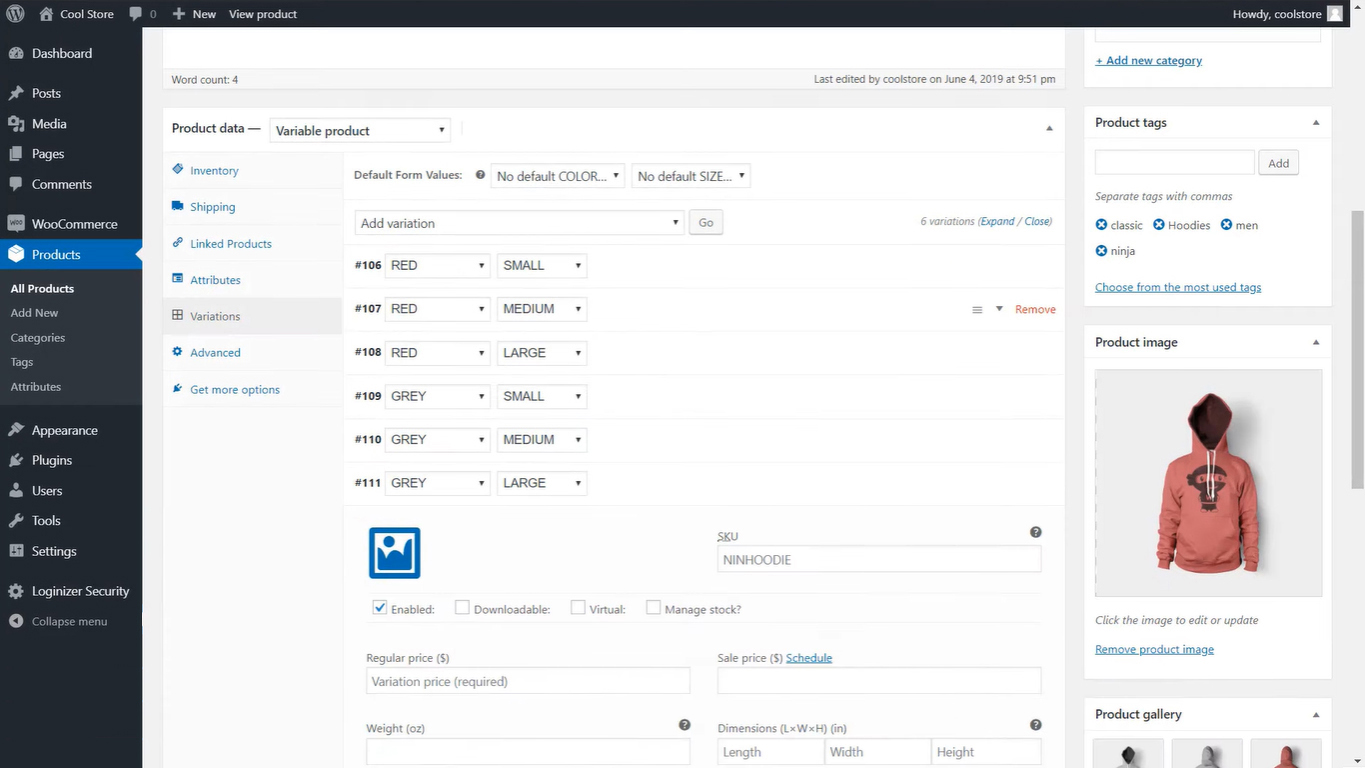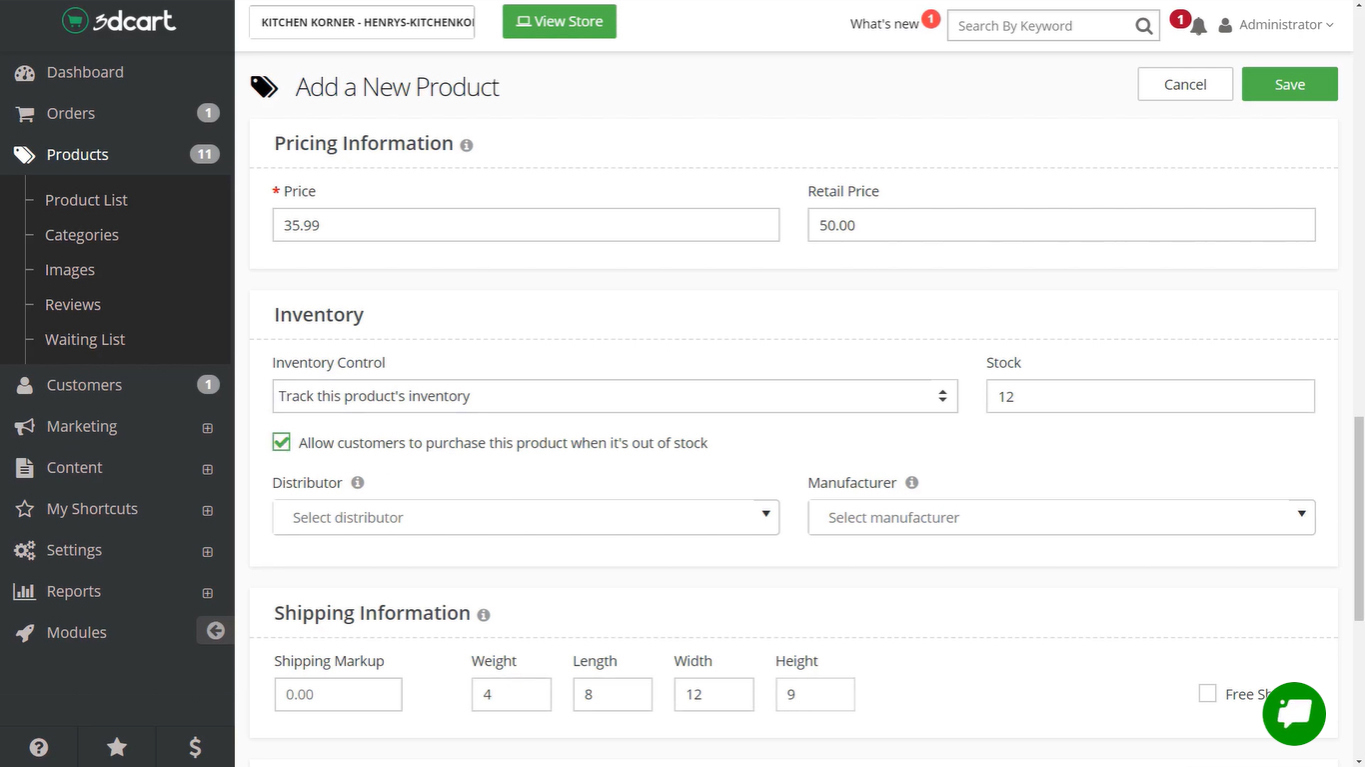From physical goods, services, and digital products, the eCommerce industry has made it possible for small and large businesses alike to sell anything online. But while the opportunity is rife, so is the competition. There’s a good chance that, just like a physical store, there’s another store around the block selling the same products or services as you are but are seeing better results. The success of your eCommerce business will rely mostly on two things. One, whether your chosen niche is saturated or not. The other one, which, when executed correctly, can resurrect even a saturated niche, is how you leverage your resources to create an incredible shopping experience.
The goal of eCommerce is to reach a point where it can replicate, and even enhance, the same experience as if someone is browsing a store, or having a face-to-face meeting with the vendor and this also includes eCommerce customer retention. Ecommerce software offers hundreds of tools like Shopware to make this easy. And yet, customers still experience a lot of issues on their buying journey. Take, for example, the high cart abandonment rates, which could be the result of bad user experience during checkout. There’s also the issue of poor product return handling, losing the customer’s trust in the process. And then there is price competition. By choosing a powerful eCommerce software, you can get ahead of the competition, primarily by solving these common issues.
Most of all, how can you establish a robust online presence and build a unique brand? We will address these issues in this article and show you some of the best eCommerce software options to try. A list of features and benefits gives you an idea of the available tools and strategies that you can use for your business.
What is eCommerce Software?
Ecommerce software is a tool and a platform that enables store owners to run an online store. From managing inventory, adding and removing products, updating prices, and everything else required to fulfill orders, eCommerce software streamlines the process in a simple interface, making it as user-friendly as possible for the store owner.
List of Best eCommerce Software
Here are the most preferred eCommerce software solutions today:
- Shopify: The most preferred platform by small merchants who are just starting with eCommerce, although it can still handle larger sales. Since the vendor hosts it on a cloud-based platform, there is no need to upgrade and maintain the Shopify email marketing software. Web-based software will give you more flexibility in running your business from anywhere. A Basic Shopify Plan costs around $29/month, which allows up to 2 users/staff and on different sales channels (depending on your country). The second plan, Shopify, costs $79/month, allowing up to 5 users, with hardware peripheral support, and lower transaction fees from payment providers. At $299/month, you can get the Advanced Shopify Plan with up to 15 users, advanced report builders, etc.
- Bigcommerce: The top choice for companies and prominent merchants. Hush Puppies, Fujitsu, and Toyota are among the success stories of brands that were able to increase sales using the platform. With almost the same pricing as Shopify, you get unlimited user accounts, unlimited file storage, and bandwidth on all plans. It also integrates with different social channels such as Facebook, Instagram Pinterest, and Google Shopping on all plans. Bigcommerce Plus ($79.95) is the most popular plan, which includes abandoned cart saved and stored credit cards from the basic set of features that you can get from the Standard Plan ($29.95). The Pro Plan ($299.95) includes a custom SSL, and product filtering so customers can see specific products.
- WooCommerce: An open-source platform used by large enterprises. What enabled this app to make the top list is because it is built to integrate with WordPress, a world’s leading tool in creating a website. With WooCommerce, you can sell anything from physical to digital products. You can modify and customize everything, add products, users, and process orders with no limits. It supports a list of secure payment gateways like Paypal, Amazon Payments, and Stripe. If you already have an existing website with WordPress, this is a good choice. However, while WooCommerce is free to use, you will have to pay third-party add-ons that enable you to start running the online store. You will have to pay for a separate hosting solution and domain from Bluehost as an example, functional shopping cart plugins, and themes, among others.
- Wix Stores: A website builder with drag-and-drop and eCommerce functionality called Wix Store, which is available from the Wix Market. Hence, compared to other eCommerce software mentioned here that focus on selling products, Wix is a website builder for beginners and can pass as an ideal platform for blogging and content producing sites with products to sell on the side. However, Wix Stores cannot provide the same level of support as other options; it is still a useful tool to sell products and digital downloads. It even comes with secure SSL-certificate checkout, an intuitive store manager, and trusted payment gateways. Wix has three different eCommerce plans billed annually, starting at $23/month for Business Basic, $27/month for Business Unlimited, and $49/month for Business VIP.
- Yo!Kart: A leading eCommerce marketplace software that can power multi-vendor websites like Amazon, Etsy, and others. The solution is self-hosted, scalable, and available for a lifetime of use with one-time payment. This makes it equally attractive for startups with low or high investment capital or existing online businesses considering to re-platform. What further enhances its appeal is the availability of essential eCommerce features and business API pre-integrated. Moreover, to get an advantage in the competitive eCommerce landscape, turnkey eCommerce solutions may need customizations. Yo!Kart is fully customizable and is also backed by an in-house team. The license for Yo!Kart can be purchased by availing of inclusive packages starting from US $999, which also includes up to 1 year of free technical support and full source code ownership.
- 3dcart: A platform that has all the features you need from a website builder: beautiful store design, marketing and SEO, secure hosting, and even mobile eCommerce. Its Startup Store Plan costs $9.50/month, which already includes one staff user, domain registration, secure web hosting, API access, among other default features. The Basic Store Plan costs $14.50/month, while the Plus Store Plan costs $39.50/month, with each plan having more advanced tools than the first.
- CoreCommerce: An all-in-one platform with a secure hosting capability. The CoreCommerce Plan which costs $29 is suitable for shops with 30 or fewer products and gross sales of $60,000 for the last 12 consecutive months. CoreCommerce Pro Plan costs $79 for 500 or a few products and has $240,000 gross sales. At $225 for the CoreCommerce business, you can sell unlimited products.
- Magento: This platform takes advantage of customer segmentation by displaying content and offering pricing and promotions to specific customers based on their unique profiles and customer journey. The Page Builder functionality enables users to dynamically change the design without much reliance on IT. Magento also allows you to distribute on Amazon and connect to Google as a Merchant and display ads. Having this integration helps you expand your reach and grow your sales.
- Squarespace: One of the best examples of eCommerce software that offers the best aesthetically pleasing selection of templates to choose from. From a rich product display, you also get to have a store with flexible payment methods, and no-fuss checkout. As the owner, you can easily manage your store on-the-go with the Mobile Store Management which lets you track inventory, and connect with your customers wherever you are. Small businesses and professionals who want to sell their services will find Squarespace a much suitable platform.
- Big Cartel, LLC: A suitable platform for custom shops like custom t-shirt designs, art, hand-made crafts, and other creative projects. It offers different pricing plans based on the number of products. The Platinum Plan costs $9.99 for 25 products. The Diamond Plan costs $19.99 for 100 products. Lastly, the Titanium plan at $29.99 for 300 products.
- Ecwid, Inc: The top choice of businesses with a huge following on social media and marketplaces like Amazon. You can set up an online store basically for free, but to get the full features, you will have to purchase one of these plans: the Venture Plan at $12.50 per month paid annually; the Business plan at $35 per month or $29.17 if paid annually; and the Unlimited Plan at $99 per month or $82.50 if paid annually. The difference of each plan depends on the sales channels that you can connect to your store, mobile capability, marketing campaigns, order fulfillment features, and promotional offers.
- Volusion: Lets you create your site with its very own site builder, sell your products or services using eye-catching product pages, seamless payment, and checkout process, and even grow your business with marketing strategies and integrations built into the platform. The Personal Plan costs $29 per month, the Professional Plan costs $79 per month, while you can avail the Business Plan at $299 per month. Choosing which plan depends on the number of sales that you usually get per year.
- PrestaShop: An affordable eCommerce platform option suitable for small and mid-sized companies that sell customizable products. Though, without some basic technical knowledge about website infrastructure, PrestaShop will be a little challenging to manage.
- Weebly: Subscription plans start at $12 per month paid annually for Pro Plans best for Groups and Organizations. The Business Plan costs $25 per month paid annually and is best for small businesses. While power sellers will find Business Plus which costs $38 per month much suitable.
- E-junkie: Designed for digital downloads selling like e-books and coupon codes. Selling digital downloads require specific features than other products and services. With E-junkie, you can generate keys and codes that expire after limited downloads, you can have E-book protection and put stamps on your products so they can’t be available for reselling. You can also offer affiliate programs to your sellers for bigger sales.
- OpenCart: Another open-source platform that has everything you need to set up an online store. You can manage several stores through a single interface. You can sell products with different sizes and color variations and it will be shown in a simple and user-friendly product page. While other stores require you to set up different stores for different currencies, OpenCart lets you sell in any currency and makes it even easier by allowing you to modify tax charges. Lastly, the sales report feature gives you a glimpse of your sales per month.

A clean interface is also a must in an eCommerce platform.
How eCommerce Software Works
On the front-end, and as an online customer, you see a website storefront with a list of products and their respective pricing. Buying the products is as easy as adding the items to the cart and choosing a payment method available to you. Once you check out, you get a notification email that it has confirmed your order, including details on when you should receive the product.
Ecommerce software takes charge of all processes, from order to payment. While the platform cannot handle all such tasks, it should allow configurations with other plugins to run the business without having to switch between software.

A good eCommerce platform gives you a dashboard of your online metrics for a quick lookup.
Types of eCommerce Software
There are two common types of eCommerce software: on-premise and software-as-a-service (Saas).
On-premise eCommerce
A team of on-site experts runs on-premise eCommerce platforms. Businesses choose this eCommerce software type, prioritizing the security of having their site run on a local server. There’s a tremendous amount of control when it comes to modifying the backend. However, on-premise eCommerce requires a significant upfront investment on the infrastructure and on the team that will maintain the site. Additionally, the software needs to upgrade every three to five years to keep up with growing eCommerce trends.
Software as a Service (SaaS) eCommerce
SaaS eCommerce is a type of service where you pay for the subscription to the service to be in charge of the overall operation. While you won’t have as much control in SaaS, it takes charge of servers and makes everything easy with features and integrations that you can freely add.
Understanding the advantages and disadvantages of these two common eCommerce types lets you identify how it can impact your business operation and how well it will perform. Between on-premise and Saas, there is still, of course, a consideration of unique business operations to know which one is better for you. Although generally, most small businesses are choosing SaaS for budget reasons. And having your database in the cloud managed by a service provider is more secure, scalable, and customizable.

You can easily manage product information with drag-and-drop functionality.
Features of eCommerce Software
Specific eCommerce features are needed for the store to run successfully.
Website Builder
People buy your products through a website storefront. But if you don’t have one yet, any eCommerce software that you choose will have a built-in website builder. In less than a day, you can have a professional-looking website to showcase your products.
Central Database
A central database keeps all records of inventory, product pricing, payment status, customer information, shipping updates, etc. This way, every information that you need is kept in one place.
Analytics and Reporting
A summary of your sales for the current month, and which touchpoints have been the most effective one that pointed your customers to your store helps you see trends and strategize on the next month.
Integration
From order fulfillment, tax computation, payment processing, etc., eCommerce software combines all of the third-party platforms that you need to handle various tasks.
Marketing Tools
Aside from store operations, eCommerce software also helps with your marketing strategy. You can use the software to offer sales, discounts, and even develop targeting campaigns to boost sales. You may also invest in dedicated eCommerce marketing automation tools like GetResponse to scale up your outreach.

Look for a feature that lets you provide product variations.
Benefits of eCommerce Software
Ecommerce software comes with tremendous benefits to your business. Because of broader reach, combined with targeted marketing and worry-free shopping experience, one should only expect high revenue potential.
Wider customer reach means increased sales potential
As one of the main goals of eCommerce, businesses, even small ones, can introduce their products to a broader audience through the Internet’s global reach.
Manage products and fulfill orders, automate shipping and taxes
With a central database and feature integrations combined, handling tasks such as payment verification, order fulfillment, email updates on shipping, and feedback on return requests, happen in just one platform.
Simplifies marketing
More and more eCommerce sites are using a new strategy to simplify marketing. They add discounts and bundle features; they integrate SEO for eCommerce websites, among other marketing tactics.
Your store is open 24/7, supports multiple languages
Unlike a brick and mortar store, eCommerce sites are open, and since it automates everything, operations continue.
Factors to Consider When Buying eCommerce Software
There are a lot of factors to consider when choosing an eCommerce software for your business. While you focus on the key features and benefits of such plans, there are three primary considerations that you shouldn’t disregard.
Budget
If you get one of these five top options, you will consider budget constraints. Each pricing plan will have different features that may or may not be useful to you. Having to explore such options, you can decide whether getting either the cheaper or more expensive plan is a smarter decision. Since a lot of these plans allow you to upgrade at no cost, it might be wiser to start with the cheapest first and then upgrading to what seems like a better choice.
Integrations
There are hundreds of integrations available in any of these plans. And just like your pricing option, it’s easy to get bombarded with choices. If you’re starting with eCommerce from the ground up, focus on the key features first and assess which features will work with your strategies.
Mobile-Responsive
It should be a requirement for every eCommerce software that the platform and website are both mobile responsive. This allows you to approve store operations in a matter of clicks. It also enables you to review reports and analytics, customer profiles, and product information just by browsing through your mobile phone.
Latest Trends
Ecommerce advancements just keep on coming and are becoming more advanced. Here are the latest ones that you can apply to your online store.
Omnichannel Retailing Strategy
There’s a considerable chance that several of your customers also check out your social media profiles, visit the physical storefront, and look through sites like Amazon or eBay, where you also sell your products. Being able to reach your customers at multiple touchpoints makes you even more trustworthy and present.
Mobile Shopping
One of the main touchpoints is through mobile. When most of your potential customers are browsing through mobile, you should be able to exist on that platform to make contact easier.
Voice Shopping
Product pictures will not suffice when the voice search era has fully taken over. And as early as now, you should be preparing for voice search. And you can do this by optimizing your site so that products have proper descriptions, and that size and dimensions are accurate.
Live Chat Technologies
To make the shopping experience more personalized, eCommerce sites will need to integrate a live chat technology on their websites. Shopping will be easy as asking the chatbot to look for a particular product.
Environment-Friendly Products
Consumers are becoming more conscious about their product consumption. A huge percentage of customers decide on buying your products, mainly because materials are reusable and eco-friendly. Businesses should meet these requirements, sourcing materials from ethically and fair-traded organizations.
Dropshipping Business
More and more entrepreneurs are trying out the drop shipping business model, which forms a major percentage of eCommerce. In this business model, owners don’t need to store inventories. Instead, they act as the mediator between a consumer and a manufacturer. First, they source quality products from wholesale websites like Amazon business, SeeBiz, Alibaba, etc. Then, they do the marketing part and generate huge returns just by selling products on their eCommerce sites.
QR Payment Codes
QR codes are making a comeback as it proves an easier way to make quick and accurate payments.

An inventory management tool is important to help you avoid overstocks and understocks.
Potential Issues with eCommerce Software
Lastly, there are also challenges that you should prepare for when deciding to move your business online.
Data Security
When conducting your business online, security is one of the first steps you should dwell on. Not only will it compromise your data, so does the personal information of your customers.
Abandoned Cart
It’s a common issue in many eCommerce sites to see high rates of abandoned carts. These are caused either by a complicated checkout process, or just the customer changing his/her mind. Marketing tools that create emails can solve this. You can remind the customers if they would like to return to their abandoned carts and resume buying. Discount gimmicks work well to convince your customers.
Product Returns and Refunds
It’s highly likely that products get damaged on their way to their buyers. It could be a product fault or damaged during delivery. As an eCommerce business, you should be able to develop how you will handle product returns and refunds. Make this process as fast and hassle-free as possible to the customer. Remember that they’ve already made the purchase, which means they already trust your brand. It’s a loss to ruin this trust just because of poor product returns handling.
Price Competition
As you get more competitors, who are probably selling the same set of products and perhaps even sourcing from the same supplier, you will need to develop a pricing strategy and compete with pricing.
Longer Shipping Times
This is a common issue, especially for dropshipping businesses where they don’t have control over the manufacturer’s shipping schedule. You must warn your customers about longer shipping times. A way to do this is by putting a disclaimer on the shipping schedule. This way, you can set your customer’s expectations and prevent disappointment.
Ecommerce business is a lot of work. But with the right tools, a carefully crafted plan, and the proper execution will prove higher returns in no time.
